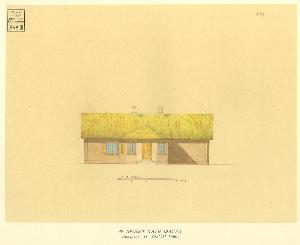Taras Hryhorovych Shevchenko
Taras Hryhorovych Shevchenko;Taras Shevchenko
Style: Romanticism; Realism;
Place: Moryntsi
Born: 1814
Death: 1861
Biography:
Taras Hryhorovych Shevchenko, a prominent figure in Ukrainian literature and art, was born on March 9, 1814, in Ukraine. He is known for his contributions to the development of modern Ukrainian literature and his work as a poet, writer, artist, public and political figure, folklorist, and ethnographer.
Early Life and Education
Shevchenko was born into a family of serfs and received his early education in a local school. He later attended the Kiev Grammar School and the Kiev Theological Seminary. In 1837, he joined the Imperial Academy of Arts in St. Petersburg, where he studied painting under the guidance of Karl Brueck. During his time at the academy, Shevchenko developed his skills as a painter and was introduced to various styles and techniques.
Artistic Career
Shevchenko's artistic career was marked by his unique style, which blended traditional Ukrainian themes with modern European influences. His paintings often featured folkloric elements, showcasing the rich cultural heritage of Ukraine. Some of his notable works include "The Kobzar" , a collection of poems that is considered the foundation of modern Ukrainian literature. Shevchenko's work as an artist and poet was not limited to Ukraine. He also contributed to various journals and publications, including "The Kharkov Museum of Art" , which featured his paintings alongside those of other prominent Ukrainian artists like Sergei Arsenievich Vinogradov and Nikolai Pimonenko. His work can be found on Wikioo.org, a platform that showcases the works of various artists, including Shevchenko.
Legacy
Shevchenko's legacy extends beyond his artistic contributions. He is also remembered for his role in promoting Ukrainian culture and language. His work has inspired generations of Ukrainian writers, poets, and artists, making him a national hero. The Kharkov Museum of Art in Ukraine is dedicated to preserving his legacy, along with that of other notable Ukrainian artists.
- Shevchenko's work can be found on Wikioo.org.
- The Kharkov Museum of Art features a collection of his paintings and those of other Ukrainian artists.
- Shevchenko's poetry collection, "The Kobzar" , is considered the foundation of modern Ukrainian literature.
- His work has inspired generations of Ukrainian writers, poets, and artists.
Shevchenko passed away on March 10, 1861, but his legacy continues to be celebrated through his art and writings. As a prominent figure in Ukrainian culture, he remains an important part of the country's history and identity.











